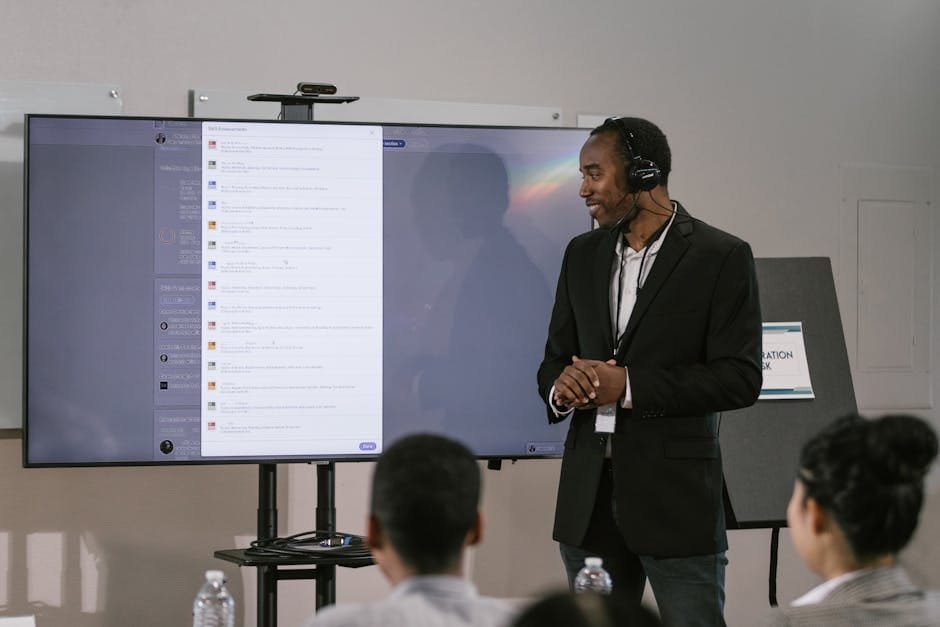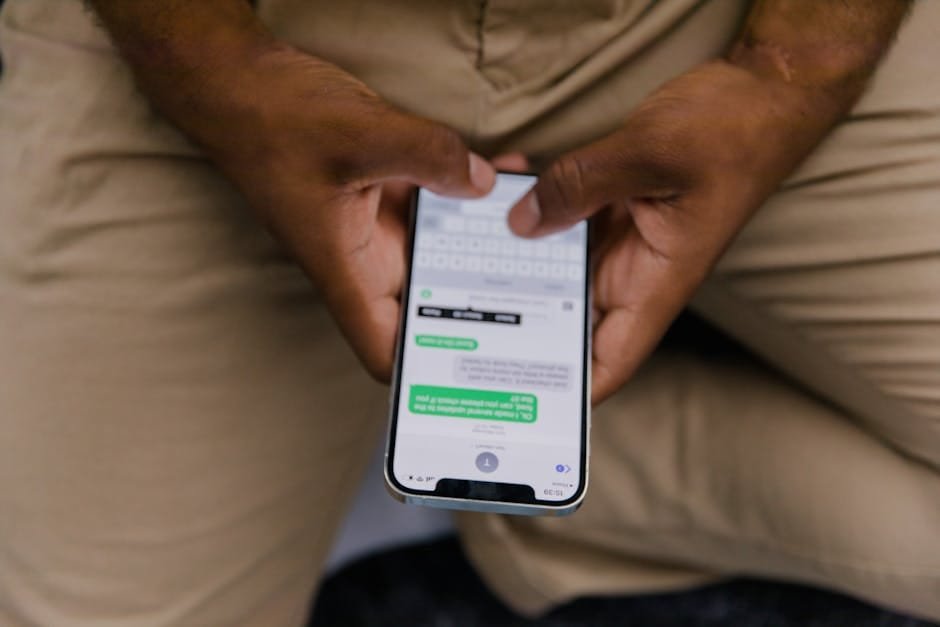In the fast-paced world of the insurance industry, finding the right leads can feel like searching for a needle in a haystack. But fear not, brave BDRs! With the right lead qualification strategies in your toolkit, you can transform that overwhelming task into an exciting challenge. In this article, we’ll explore effective lead qualification tips tailored just for you, making it easier to sift through the clutter and connect with prospects who are genuinely interested in what you have to offer. So, grab your coffee, get comfy, and let’s dive into the art of turning potential into performance!
Table of Contents
ToggleMaster the Art of Initial Outreach
Embarking on the journey of connecting with potential leads can feel overwhelming, but it’s akin to crafting a captivating story. The key is to start with the right blend of curiosity and professionalism. Begin by doing your homework; a little *sleuthing* goes a long way. Uncover the core details about your prospect’s business, recent achievements, and pain points. This initial step not only makes your outreach personable but shows that you genuinely care about their concerns.
Customization is the magic word when it comes to initial outreach. No one enjoys a generic, one-size-fits-all message. Personalize your communication by addressing the prospect by name and referencing specific facts about their business. To elevate your game, highlight how your insurance solutions can directly address their unique challenges. Here are a few other tips to keep in mind:
- Be brief but impactful: Keep your initial message short and to the point. Busy professionals appreciate concise communication.
- Include a call to action: Pivot the conversation towards the next step, whether it’s scheduling a call or meeting in person.
- Leverage multiple channels: Sometimes an email might not be enough. Follow up through LinkedIn or a quick phone call to ensure your message is received.
Additionally, keeping track of your outreach efforts is crucial. Consistent follow-ups can make all the difference. To help with this, use a simple table to organize your outreach plans:
| Prospect Name | Business Detail | Initial Outreach Date | Follow-up Date |
|---|---|---|---|
| John Doe | XYZ Corporation | Oct 10, 2023 | Oct 17, 2023 |
| Jane Smith | ABC Enterprises | Oct 11, 2023 | Oct 18, 2023 |
By implementing these tactics, you will be well on your way to turning cold leads into warm, valuable connections.
Crafting Compelling Discovery Questions
At the heart of effective lead qualification in the insurance industry lies the art of crafting discovery questions that are both insightful and engaging. These questions not only help you understand a prospect’s needs and pain points but also build rapport and trust. To achieve this, consider incorporating the following strategies into your question-crafting process:
- Personalization is Key: Tailor your questions to each prospect’s unique situation. Avoid generic inquiries and focus on aspects specific to their business or personal needs. For example, ”How has your current policy adapted to your recent business expansion?” shows you have done your homework.
- Open-Ended Questions: Encourage conversation by asking questions that require more than a yes or no answer. This not only provides more information but also shows genuine interest. Questions like ”What challenges have you faced with your previous insurance provider?” can open the door to valuable insights.
- Focus on Pain Points: Identify and address the prospect’s most pressing issues. Questions such as “Can you describe a recent incident where your coverage fell short?” highlight areas where your product can offer solutions.
Here’s a quick comparison of effective and ineffective discovery questions to illustrate the difference:
| Effective Questions | Ineffective Questions |
|---|---|
| What are the main goals for your business this year? | Do you want to save money on insurance? |
| Can you tell me about any recent claims or issues you’ve had? | Are you happy with your current provider? |
| How do you currently evaluate your insurance needs? | Would you like better coverage? |
By refining your discovery questions with these methods, you’ll not only gather crucial information but also create a positive experience for the prospect. Remember, the goal is to understand their needs deeply and position yourself as a trusted advisor rather than just another salesperson.
Leverage Data-Driven Insights for Better Leads
In the bustling world of insurance, understanding and utilizing data isn’t just beneficial—it’s essential. Business Development Representatives (BDRs) can significantly enhance their lead qualification processes by integrating data-driven insights. These insights provide a clearer picture of prospective clients’ behaviors and preferences, ensuring that outreach efforts are both effective and efficient.
Consider the implementation of advanced analytics tools. These tools can sift through vast amounts of data to identify patterns and trends, enabling BDRs to target leads more precisely. Key indicators such as demographic information, online behavior, and past interactions can offer a comprehensive view of potential clients. Here’s what BDRs should focus on:
- Behavioral Data: Track online activities, such as website visits and content engagement.
- Demographics: Age, location, occupation, and other personal data help in personalizing communication.
- Purchase History: Past purchases and policy renewals indicate a customer’s loyalty and preferences.
| Data Type | Benefit |
|---|---|
| Behavioral Data | Informs marketing strategies and personalizes outreach. |
| Demographics | Helps in segmenting the target audience effectively. |
| Purchase History | Reveals customer preferences and loyalty trends. |
Additionally, integrating customer relationship management (CRM) systems with data analysis tools can streamline the lead qualification process. These systems allow BDRs to maintain and access detailed customer profiles, which can then be leveraged to tailor interactions, keep track of follow-ups, and ensure no lead falls through the cracks. Embracing a data-centric approach ensures that each lead is nurtured appropriately, ultimately converting more efficiently and fostering long-term client relationships.
The Power of Personalized Communication
Harnessing the impact of personalized communication in the insurance industry can transform lead qualification from a daunting task into a rewarding experience. By addressing potential clients’ specific needs and preferences, Business Development Representatives (BDRs) can build deeper connections and trust more swiftly. Start by segmenting your audience based on criteria like age, insurance needs, and current coverage levels. This allows you to tailor messages that resonate more personally.
- Personalized Emails: Use the prospect’s name and refer to their specific insurance needs.
- Customized Offers: Present insurance policies that match their unique life situation.
- Engaging Content: Share articles, guides, and insights that address their questions and concerns.
To enhance the effectiveness of these strategies, employ data from CRM tools and social media insights. Data-driven personalization avoids generic pitches and instead offers a unique, individual value proposition. Here’s how detailed data can refine your approach:
| Category | Data Insights | Personalized Approach |
|---|---|---|
| Age Group | 25-34 years | Highlight affordable premiums and long-term savings. |
| Current Coverage | Home Insurance only | Introduce bundled offers for auto and health insurance. |
| Occupation | Self-employed | Focus on flexible payment plans and professional liability. |
Personalization in communication does not solely revolve around emails and offers. Engage your leads through multiple channels, including phone calls, and ensure every interaction is infused with the same level of customization and care. A well-researched and personal touch can be the difference between a cold lead and a loyal client.
Qualifying Leads Through Effective Follow-Ups
Consistency and Timeliness
One of the most important aspects of lead qualification through follow-ups is being consistent and timely. When a lead expresses interest or downloads a resource, it’s crucial to follow up within a reasonable time to keep the momentum going. Regular follow-ups show that you value their time and are keen to resolve their queries or concerns. Here are some effective follow-up actions:
- Send a thank-you email immediately after the first interaction.
- Schedule personalized check-ins at intervals as the conversation progresses.
- Offer additional resources like eBooks, webinars, or free consultations.
Personalization and Value Addition
Personalized follow-ups can make the difference between a cold lead and a warm prospect. Addressing the specific needs and pain points of your leads by providing tailored solutions can significantly influence their decision-making process. For instance, if a lead is concerned about insurance premiums, providing a detailed breakdown of potential savings can help. Here’s a quick example of how you can structure follow-up content:
| Lead Concern | Follow-Up Action |
|---|---|
| High Premium Costs | Send a comparison chart of different plans with cost-saving options. |
| Coverage Queries | Offer a one-on-one consultation to explain policy details. |
| Complex Terms | Provide simplified literature or video explanations. |
Using Multiple Communication Channels
In the modern digital age, sticking to just one form of communication might not be effective. Diversifying your follow-up channels ensures that you reach your leads where they are most active. For example, while some might prefer emails, others might respond better to phone calls or even social media messages. Consider these strategies:
- Alternate between email and phone to keep the engagement dynamic.
- Leverage social media platforms like LinkedIn for professional dialogue.
- Use SMS for quick updates and reminders.
Harnessing Technology to Streamline the Process
Embracing innovative solutions is crucial in helping Business Development Representatives (BDRs) excel at lead qualification in the insurance industry. By integrating advanced technologies, representatives can more effectively identify high-potential leads and optimize their strategies accordingly. Tools such as Customer Relationship Management (CRM) systems, predictive analytics, and automation software each play unique roles in refining the lead qualification process. Here’s a quick breakdown of how these technologies can be a game changer:
- CRM Systems: Centralizing client information allows BDRs to enhance customer segmentation and prioritize follow-ups.
- Predictive Analytics: Advanced algorithms forecast lead conversion probabilities, aiding in strategic decision-making.
- Automation: Automating repetitive tasks, like follow-up emails, frees up time for more meaningful client interactions.
| Technology | Benefit | Action |
|---|---|---|
| CRM Systems | Centralized data | Prioritize leads |
| Predictive Analytics | Conversion forecasts | Strategic planning |
| Automation | Streamline tasks | Enhanced efficiency |
Beyond leveraging these technologies, fostering a collaborative atmosphere where BDRs can share insights and tactics boosts collective knowledge and performance. Consider setting up a knowledge-sharing platform or routine meetings to discuss best practices and emerging trends. Remember, a tech-savvy and well-informed team is more likely to succeed in qualifying leads and closing deals.
Building Trust with Prospective Clients
Trust is the bedrock of any successful relationship, and this holds especially true when dealing with prospective clients in the insurance industry. Building trust involves transparent communication, consistent follow-up, and demonstrating a genuine interest in the prospective client’s needs and concerns. By cultivating these elements, BDRs can foster long-term, mutually beneficial partnerships.
Start by ensuring that your communication is always clear and transparent. Share all necessary information about the insurance products and services without any hidden details or jargon that might confuse the prospect. When discussing policies, provide easy-to-understand comparisons that highlight both the benefits and limitations.
Here’s a simple table illustration on discussing policies:
| Policy Type | Benefits | Limitations |
|---|---|---|
| Term Insurance | Low Premiums, High Coverage | No Cash Value |
| Whole Life Insurance | Coverage for Life, Cash Value | Higher Premiums |
Additionally, show that you’re committed and reliable by following up consistently and being punctual with meetings and communications. This reassures prospective clients that you’re dependable and dedicated to addressing their needs. Lastly, cultivate a genuine connection by actively listening to their concerns and providing tailored solutions. This personal touch not only helps in building trust but also positions you as a trustworthy advisor rather than just a salesperson.
Continuous Learning and Refinement Strategies
Insurance markets are in a constant state of flux, which means lead qualification tactics can’t remain static. To stay ahead, Business Development Reps (BDRs) should implement that adapt to new trends and technologies. Here are some ways to ensure your lead qualification process remains razor-sharp:
- Regular Industry Training: BDRs should participate in ongoing training sessions that cover emerging trends, regulatory changes, and new product offerings. This not only keeps them informed but also bolsters their ability to assess leads more effectively.
- Feedback Loops: Establish a system where feedback from sales and customer service teams is regularly reviewed. This helps in understanding which leads convert best and why, allowing for better refinement of your qualification criteria.
- Technological Tools: Make use of robust CRM platforms and data analytics tools. These can help you track lead behavior and scoring, ensuring you focus on high-potential opportunities.
It’s also essential to periodically review and adjust your KPIs to align them with your evolving business goals. Below is a snapshot of crucial metrics to monitor for continual improvement:
| KPI | Description |
|---|---|
| Lead Response Time | Time taken to follow up with new leads |
| Conversion Rate | Percentage of leads that become customers |
| Lead Source ROI | Return on investment from different lead sources |
Engaging in peer reviews and role-playing scenarios can also be a game-changer. By simulating different customer interactions and discussing outcomes, BDRs can refine their pitch and improve their ability to identify high-quality leads. Encourage a culture where sharing best practices is the norm, thus allowing the entire team to benefit from collective experiences and insights.
Frequently Asked Questions
FAQ: Effective Lead Qualification Tips for BDRs in the Insurance Industry
What is lead qualification in the insurance industry?
Lead qualification in the insurance industry refers to the process of assessing potential clients to determine their likelihood of purchasing an insurance policy. This involves evaluating factors such as their needs, budget, and readiness to buy. Effective lead qualification helps Business Development Representatives (BDRs) focus their efforts on leads that are more likely to convert, ultimately increasing sales efficiency and revenue.
How can BDRs identify qualified leads in insurance?
BDRs can identify qualified leads by using a combination of demographic information, behavioral data, and specific criteria relevant to insurance needs. Key factors to consider include the lead’s age, income level, previous insurance coverage, and life events that may prompt the need for insurance. Additionally, engaging in active listening during conversations can reveal insights about the lead’s specific needs and pain points.
What questions should BDRs ask during the qualification process?
During the qualification process, BDRs should ask targeted questions to uncover vital information. Examples include:
- What type of insurance are you currently considering or have in the past?
- What is your primary motivation for seeking insurance at this moment?
- Do you have a budget range in mind for your insurance needs?
- Are there specific coverages or features that are particularly important to you?
Asking these questions helps BDRs gauge the lead’s interest and readiness to purchase.
How can BDRs effectively follow up with leads after qualification?
After qualifying leads, BDRs should follow up with personalized communication, tailored to the lead’s needs and interests. This may include sending relevant information about potential policies, answering any questions the lead may have, or scheduling a more in-depth consultation. Utilizing a CRM system can help BDRs keep track of interactions and schedule timely follow-ups, ensuring no opportunity is missed.
What tools can assist BDRs with lead qualification?
Several tools can assist BDRs with lead qualification in the insurance industry, including Customer Relationship Management (CRM) software, lead scoring systems, and marketing automation platforms. These tools help BDRs manage leads effectively, analyze data for better insights, and automate repetitive tasks. Additionally, lead intelligence platforms can provide valuable information about a lead’s online behavior and interests, enhancing the qualification process.
Conclusion
As we wrap up our exploration of effective lead qualification tips for BDRs in the insurance industry, remember that every interaction is an opportunity to build lasting relationships and foster trust with potential clients. By honing your skills in identifying the right leads and asking the right questions, you’re not just closing deals – you’re shaping the future of your business and creating a positive impact on the lives of those you serve.
Embrace these tips with enthusiasm, adapt them to your unique style, and watch as your confidence grows along with your success. Keep in mind that lead qualification is not just about numbers—it’s about understanding and addressing the needs of your prospects. So, take a deep breath, step into each conversation with genuine curiosity, and let your personality shine through.
As you embark on this journey, know that the path to success is paved with continuous learning and adaptation. With each call, email, or meeting, you’re not only refining your technique but also contributing to a brighter and more secure future for your clients.
We hope you found these tips helpful and that they inspire you to elevate your lead qualification game. Stay curious, stay committed, and remember: every great partnership starts with a good conversation. Happy qualifying!







